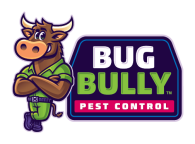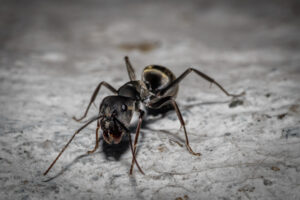Ticks have become an increasing concern for homeowners and business owners across Central Massachusetts, including Worcester, Framingham, Northborough, and Concord. These tiny parasites pose serious health risks as carriers of diseases such as Lyme disease and anaplasmosis. Because ticks thrive in certain environments around properties, understanding their preferred habitats is essential for effective tick control. Whether you’re a homeowner wanting to protect your family, an apartment renter with a yard, or a restaurant owner managing outdoor spaces, knowing where ticks hide and how to reduce their presence can make a significant difference.
At Bug Bully Rodent & Pest Control, we have over a decade of experience providing expert tick exterminator services throughout Central Massachusetts. Our goal is to help you enjoy your outdoor spaces without fear of ticks. In this article, we will guide you through the most common tick habitats found in yards and commercial properties in the area and offer practical steps to eliminate them safely and efficiently.
Understanding Where Ticks Live in Your Yard
Ticks are generally found in areas that provide moisture, shade, and access to animals on which they feed. In Central Massachusetts, their activity peaks in spring and early summer, but they can be active from early spring through late fall. Ticks tend to cling to tall grasses, leaf litter, shrubs, and brushy areas. These environments keep them protected from the sun and help maintain the humidity they need to survive.
One of the primary habitats for ticks is the edge of wooded areas. Many yards in Central Mass border or include sections of forest or dense vegetation. Ticks thrive in these transitional zones where the woods meet open lawn because this is where their hosts—deer, rodents, and birds—frequently travel. Ticks wait on low-growing plants and grasses for a host to brush past, allowing them to latch on.
Leaf piles, woodpiles, and dense shrubbery also provide ideal conditions for ticks. These areas remain cool and moist, allowing ticks to stay active for longer periods. Lawns with thick, overgrown grass are more likely to harbor ticks than well-maintained, short grass lawns. In addition, animal activity, such as frequent visits from deer or rodents, increases tick presence because these creatures are common hosts for immature and adult ticks.
For restaurant owners with outdoor seating or patio areas, ticks can be an unseen nuisance that discourages customers. Restaurants with garden spaces, planters, or outdoor décor near wooded edges or brushy areas should be vigilant. Ticks in these areas can easily come into contact with patrons, potentially damaging your reputation and impacting your business.
How to Reduce Tick Habitats and Protect Your Property
Effective tick control begins with modifying your outdoor environment to make it less hospitable to ticks. At Bug Bully Rodent & Pest Control, our tick exterminator services combine habitat modification with targeted treatments for lasting results.
One of the most important steps is managing the lawn. Keeping grass cut short significantly reduces tick activity because ticks avoid hot, dry areas with little cover. Regularly mowing your lawn, especially along wooded edges and garden borders, helps break up tick habitat. Removing tall weeds and clearing brushy or overgrown sections of your yard limits places for ticks to wait for hosts.
Leaf litter and woodpiles should be removed or relocated away from frequently used outdoor spaces. Leaf piles create a moist environment perfect for ticks to thrive, so disposing of leaves in a compost bin or yard waste container is recommended. If you store firewood, stack it neatly and keep it elevated off the ground, preferably away from the house or dining areas.
For homes and restaurants bordering wooded areas, creating a buffer zone of wood chips or gravel between the woods and lawn can help reduce tick migration. This barrier discourages ticks from wandering into areas where people gather. Clearing brush and trimming tree branches to allow more sunlight in will also reduce humidity, making the environment less favorable for ticks.
Removing potential host animals from your yard is another critical strategy. White-tailed deer and small rodents like mice and chipmunks carry ticks and introduce them to your property. Installing fencing to keep deer out, sealing gaps or holes in foundations and walls to prevent rodents, and managing bird feeders (which can attract rodents) will limit these hosts.
When Professional Tick Extermination is Necessary
While habitat modification is effective, it often needs to be supplemented by professional tick control treatments, especially for larger properties or persistent infestations. Our expert tick exterminators at Bug Bully Rodent & Pest Control use targeted applications of environmentally responsible products designed to kill ticks at various life stages.
We begin with a thorough inspection to identify high-risk areas where ticks are concentrated. Treatments are applied strategically to these zones, focusing on shaded, humid areas and locations where hosts frequent. Our approach minimizes impact on beneficial insects and the environment while maximizing tick elimination.
For restaurant owners, professional tick control is vital to maintaining safe outdoor dining areas. Our treatments comply with local health regulations and are scheduled to minimize disruption to your business. Combined with our habitat management advice, these services provide comprehensive tick protection.
Common Questions About Tick Habitats and Control in Central Massachusetts
What time of year are ticks most active in Central Massachusetts?
Ticks in Central Massachusetts are most active from early spring through late fall, with peak activity in May and June. However, mild winters and early springs can extend their active season.
Can ticks live indoors?
Ticks generally prefer outdoor habitats but can occasionally enter homes on pets or clothing. They do not live or breed indoors but should be removed promptly if found inside.
Are tick bites dangerous?
Tick bites can transmit diseases such as Lyme disease, anaplasmosis, and babesiosis. Early detection and removal reduce the risk of disease transmission. Always monitor bites for symptoms and consult a healthcare provider if needed.
How can I check my yard for ticks?
Conduct regular inspections, especially near wooded edges and tall grass. Wearing light-colored clothing and using tweezers or a tick removal tool can help identify ticks attached to skin or pets after outdoor activities.
Does tick control work on all tick species?
Yes, professional tick control treatments target common tick species found in Central Massachusetts, including the blacklegged tick, which is the primary vector for Lyme disease.
Final Thoughts on Tick Control for Central Massachusetts Properties
Ticks are a persistent and sometimes insidious pest that can impact both homeowners and restaurant owners in Central Massachusetts. Understanding where ticks live and taking proactive steps to eliminate their habitats is the foundation of effective tick control. Combining these efforts with professional tick exterminator services from Bug Bully Rodent & Pest Control provides the best protection for your family, customers, and property.
Maintaining a well-kept yard, reducing leaf litter, controlling hosts, and applying expert treatments will reduce tick populations and the risks they carry. If you have questions about ticks or need help creating a tick control plan tailored to your property, our team is here to assist you with friendly, knowledgeable service.











